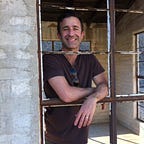The Ultimate Guide To Bath Soaks From Around The World
Ultimate Guide To Bath Soaks
This ultimate guide to bath soaks is inspired by deep appreciation for global cultures. In this digital age, we are blessed with many useful exploratory tools. These tools allow us to find traditional methods and recipes from bath soaks from around the world. Let’s share the knowledge!!
Bathing is not merely a means to get ‘clean’. From this standpoint, we completely miss a massive cultural phenomenon. I propose the illustrious term ‘RITUAL SOAK’ as a unique new category. For good measure we will include traditional and sacred bathing principles originating across the globe.
Our mission is to explore, understand, then apply the readily available healing wisdom from different cultures. There is a verifiable treasure chest of knowledge — if we dig beneath the surface.
Read along and discover relevant information about how you can turn an ordinary bath into an amazing and memorable bath soak experience.
Traditional Bath Soaking — Health Benefits
We all know and understand the importance of bathing from a hygienic standpoint. But how about our sore muscles, sore back, tired feet, etc? We can all agree that our daily lives take a tremendous toll on our bodies. A 40–50 hour work week is a serious grind. As a result, our bodies absorb all the stress. Unfortunately, it manifests as physical discomfort.
Exploring The World Of Ritual Soaks
- Explore healing techniques dating back centuries
- Learn about powerful ingredients with therapeutic properties
- Find new ways to relax, de-stress and set our intentions
- Sleep better and wake up rested
The Origins Of Bath Soaking
Bath rituals date back to many centuries. In ancient times, water represented an element of purification. Christian Baptism is one example of common water symbolism and iconography. For instance, a newborn dipped in holy water is a sacred ritual. Practitioners of Zen Buddhism believe through meditation, “your mind can transcend the manifestations of the outer world, and return to its natural state, like clear water.”
Regardless of one’s religious or spiritual affiliations, everyone can experience the potent effects of bathing rituals. Bath rituals all have one thing in common: they harness and amplify the intrinsic healing properties of water, salt and oils.
Or bodies are mostly water, upwards of 60%. Our largest organ, our skin, is 64% water. When we fully immerse our skin in water, an interaction occurs. As a result, our outer skin layer hydrates with water and minerals. The process of osmosis creates a balancing effect. In this process, minerals permeate the skin and tissues and muscles gain valuable nutrients and minerals.
Ritual Soaks : A Brief History
The ancient literature and sacred texts are replete with water symbolism. We are born from a water-filled womb. Divine floods wipe out mankind for our sins. Narratives and allegories speak of heroes navigating the unforgiving seas. On the contrary, bath rituals provide life, health and relief.
Ceremonial ritual bath practices are found in Christianities’ Baptism, the Jewish Mikvah, Muslim ‘Wudu’ and many other world religions.
The Romans brought bathing rituals into the sphere of public life.
They erected ‘Thermae’, large public bathing complexes designed for cleansing and socializing. Archeologists paint an elaborate picture of Roman life within the Thermopolae.
It is also believed that Cleopatra was an avid bather. She had a penchant for bathing with milk and using honey on her skin.
The Russian Banya Bath Soak
Known for infusing folklore and ‘natural medicine’ into their daily lives, favorite remedies of the Russians include garlic and kvass (fermented beet juice). They are also famous for the ‘ banya’, a hot ‘spa’, often touted for its numerous health benefits.
The traditional ‘banya’ brings people from all walks of life together for bathing, scr ubbing, and socializing. Russians who soak in hot water and steam see an increase in circulation and cardiovascular functioning.
One particular method of the Russians is hitting the body with birch or eucalyptus leaves to increase circulation and exfoliation. If you’re in the UK, stop by this favorite Russian bathhouse.
Japanese Onsen Bath Soak
The volcanic islands of Japan are home to a large number of natural hot springs, called Onsen. Onsen are found in small towns or nestled in the mystical mountain landscapes. A known pastime and popular tourist attraction, the Japanese Onsen are woven into the fabric of Japanese culture.
- Japanase Onsen are defined by several key characteristics.
- Heat sources arise from deep thermal chambers and volcanic sources
- High quantities of beneficial minerals
- Water temp of at least 25 degrees Celsius
- Water contains at least one of 19 different minerals.
Lastly, if you do visit for a special Onsen experience, you must follow proper etiquette. The Onsen requires you to shower prior to entering the baths. If you wear any tattoos, keep them covered.
Finnish Sauna
A trip to Finland would be incomplete without a traditional sauna experience. The small Scandinavian country of 5 million people has about 3 million saunas. Not to mention over 180,000 lakes!!
Finns see the Sauna experience as a way to cleanse, rejuve nate, unwind and heal. Many Finns adopt the Russian technique of brushing or hitting the body with a switc h of birch branches or leaves.
This process stimulates the skin and removes impurities. A sauna experience is not complete without a plunge in a cold lake immediately afterwards.
Lastly, Set Your Intention For Your Next Bath Soak
All you need to get started is a soaking tub or foot tub. Set your intention prior to entering the tub. What are your goals?
For more information on soaking, see our blog!
In health,
Noah
Originally published at https://ritualsoak.com on February 11, 2021.
